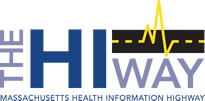Query HIE Toolkit
This toolkit provides an overview of Query HIE to assist providers in adopting this Health Information Exchange (HIE) method, which leverages the Query-based Exchange method to improve health care. The content was developed with input from the 2019 Query HIE Learning Collaborative.
Introduction
Health Information Exchange (HIE) allows the sharing of vital patient information to inform decision making at the point of care. There are two methods of HIE that can be used to electronically share information between care providers.
Directed Exchange: can be used by a referring provider to send patient information directly to another provider to coordinate patient care via Direct Messaging. This commonly used HIE method is mostly used to coordinate planned transitions of care.
Query-based Exchange: can be used by a provider to search for (query) and retrieve patient information that was made accessible by other care providers, public agencies, and other sources. This method can be used to obtain data for planned and unplanned care.
Query HIE uses the Query-based Exchange method to exchange information between care providers. As participation in Query HIE is rapidly expanding, this toolkit focuses on explaining the principles of Query HIE to exhange information from provider-to-provider.
To learn more about Directed Exchange, review the Direct Messaging page. The last section on this page provides an overview of the differences between the two methods.
Query HIE
The principle of Query HIE is simple. This HIE method helps clinicians to Query, Select, and Retrieve information made accessible by other healthcare providers via a Query HIE Network.

QUERY
Locate a patient's records across different
EHR and other clinical systems

SELECT
View the list of available records and
select the relevant records to view

RETRIEVE
Securely access the selected clinical data
from within the provider's own EHR system
Using a query to search for information may result in patient records coming back from multiple sources. For instance, a query may result in records being found in the EHRs of a PCP, a specialist, and a clinic, and the clinical systems of a laboratory and pharmacy. Query HIE typically allows the receiving provider to select what information to actually retrieve.
Query HIE Networks
Conducting Query HIE requires that providers become a member of a Query HIE Network that supports the Query-based Exchange method. These networks enable providers to share their patient information.
For Query HIE to improve care, it is imperative that many providers participate in making their patient information accessible via these networks. After all, the more patient records are accessible, the more complete the view on the patients’ health status becomes.
The ”Query HIE Networks” tab explains these networks in more detail. This includes an overview of public initiatives that created networks that have been integrated by many EHR and other clinical system vendors. As the rapid spread of these networks makes Query HIE increasingly effective, consider connecting to them as well.
Query HIE Functionality
Query HIE requires key functionality to make it work. This functionality is typically provided by the EHR vendor in collaboration with the Query HIE Network. The capabilities enable the care providers on the network to:
- Make patient information accessible on the network for the purpose of supporting future care services by other providers.
- Track whether patients agreed to make their health information records accessible on the network.
- Make queries to find any relevant patient records accessible on the network, at the time care services are provided.
- Select, retrieve, and reconcile the patient information within the provider’s EHR system.
The “Functionality” tab provides a more detailed overview of the functionality needed to participate in Query HIE.
Information Storage
The health information is typically not stored on the Query HIE Network itself. The functionality works based on indexing, meaning that the network only knows on what EHRs and other clinical systems the information is accessible and for which patients. The information retrieval is done directly from the systems that hold the health records. Basically, the network mediates the exchange.
An advantage is that if a patient changes their mind, the provider can simply turn off access and then the patient’s information will no longer be accessible on the network. However, any information that other providers have already retrieved cannot be deleted so easily. That would require manual intervention by those providers.
Using Query HIE during Unplanned Care
Because of differing Electronic Health Record (EHR) systems used at hospitals and other care organizations, clinicians often struggle to locate and access relevant patient information when they provide unplanned care. Query HIE can assist these clinicians to find the needed information far more quickly via the Query, Select and Retrieve functionality.
There are many use case scenarios where a healthcare provider would want to know the health information available for their patients during unplanned care. Examples for when using Query HIE is effective are provided in the ”Use Cases” tab.
Using Query HIE during Planned Care - Referrals
When a referring provider sends a Summary of Care (SoC) record via HIE using Directed Exchange, the receiving provider cannot simply assume that a referring provider had all the available patient information. Critical information known by other providers who have seen the same patient might be missing.
Using Query HIE can therefore also be useful when treating referred patients during planned care. If the transition of care record received from a referring provider appears to be missing key elements, Query HIE can be used to try to obtain additional data from other sources. The same principles of Query, Select, and Retrieve apply as for using Query HIE during unplanned care.
Using Query HIE during Planned Care - New Patients
Query HIE is also particularly advantageous when accepting new patients who contacted the provider directly for health care services without a referral. In this case, the provider can use Query HIE to try to obtain information from the patient's prior care providers.
Getting the patient's health data ahead of time reduces the time the provider has to spend on interviewing the patient during the first visit, and decreases the potential errors and omissions due to things the patient can't remember, doesn't realize, or doesn't know.
Directed Exchange versus Query-based Exchange
The table below highlights the key differences between Directed Exchange versus Query-based Exchange (Query HIE).
| HIE - Directed Exchange | Query HIE - Query-based Exchange |
|---|---|
| With Directed Exchange, providers can use HIE to send messages with patient information, such as the medical history they recorded, to another health professional. | With Query HIE a health professional can use HIE to search and retrieve the accessible patients’ medical history recorded by other providers. |
| The sending provider can send referrals, laboratory results, discharge summaries, and patient care orders securely over the internet in encrypted and reliable messages. | The receiving provider can request any of the healthcare records that were made accessible on the Query HIE Network, including patient records, laboratory results, medication lists, etc. |
| The receiving provider will receive information from a single provider. | The receiving provider may receive information from zero to multiple providers. |
| Directed exchange is commonly used to coordinate planned transitions of care between two healthcare providers. | Query HIE is typically used when a patient sees a provider for unplanned care, but can also be used during planned care. |
| This HIE method uses Direct Messaging to send patient information from a sending provider to a receiving provider. | This HIE method relies on providers linking to a Query HIE Network to provide query access to their patient records. |
| A patient must provide consent before a provider can send the patient’s record to other providers via HIE. | A patient must provide consent before a provider can make the patient’s record accessible for Query HIE. |
| This is referred to as a push method, as the sending provider drives what information the other provider will receive. | This is referred to as a pull method, as the receiving provider drives the search, selection, and retrieval of the information. |
Query HIE Overview Webinar
Review the webinar below to learn more about Query HIE.



